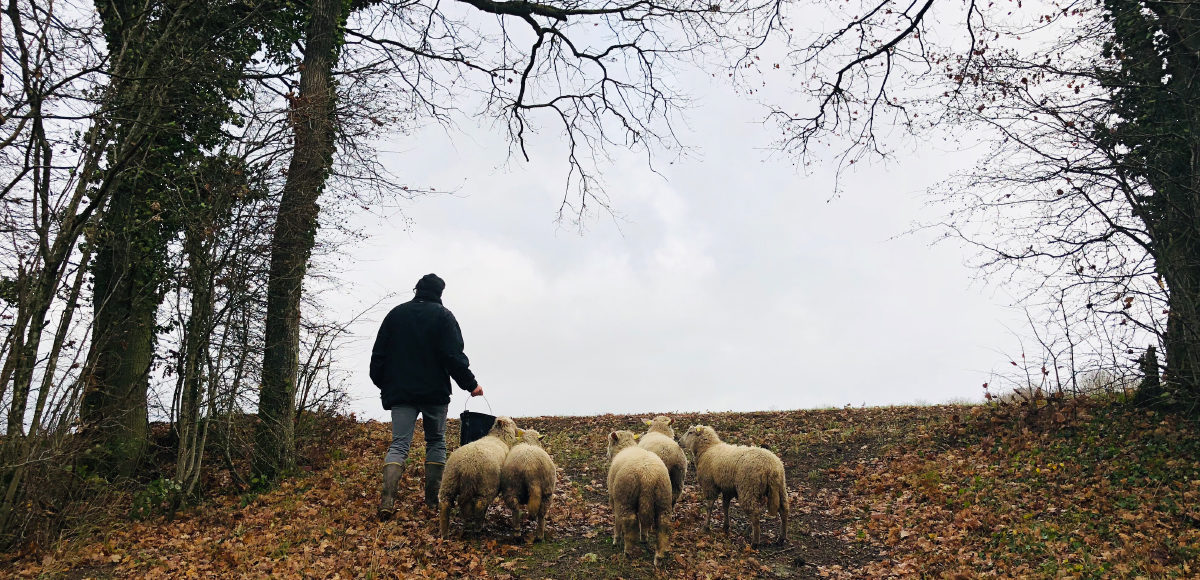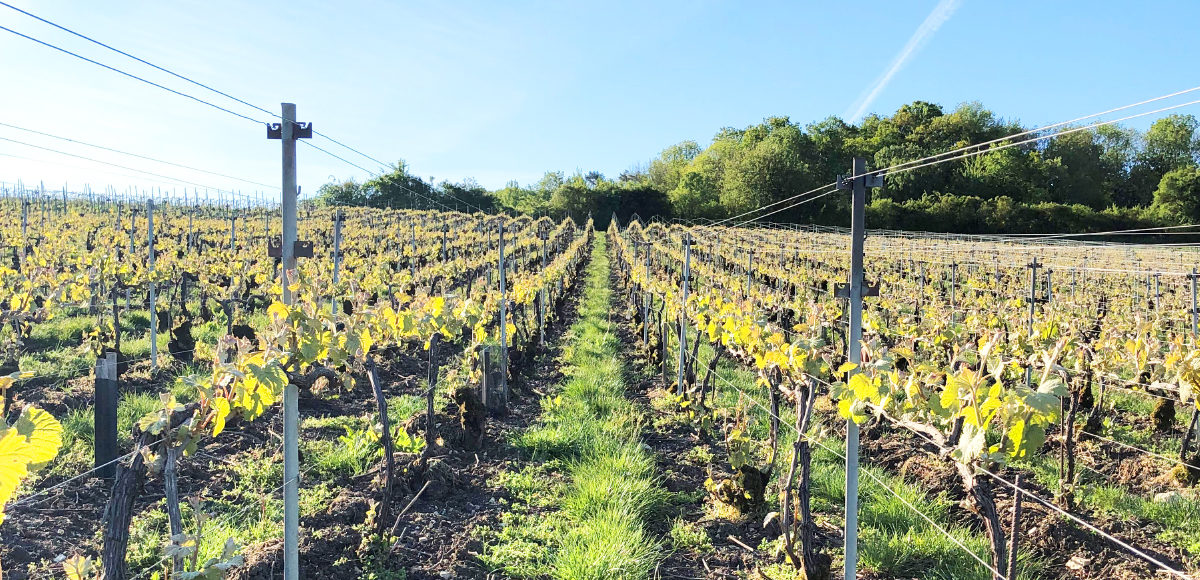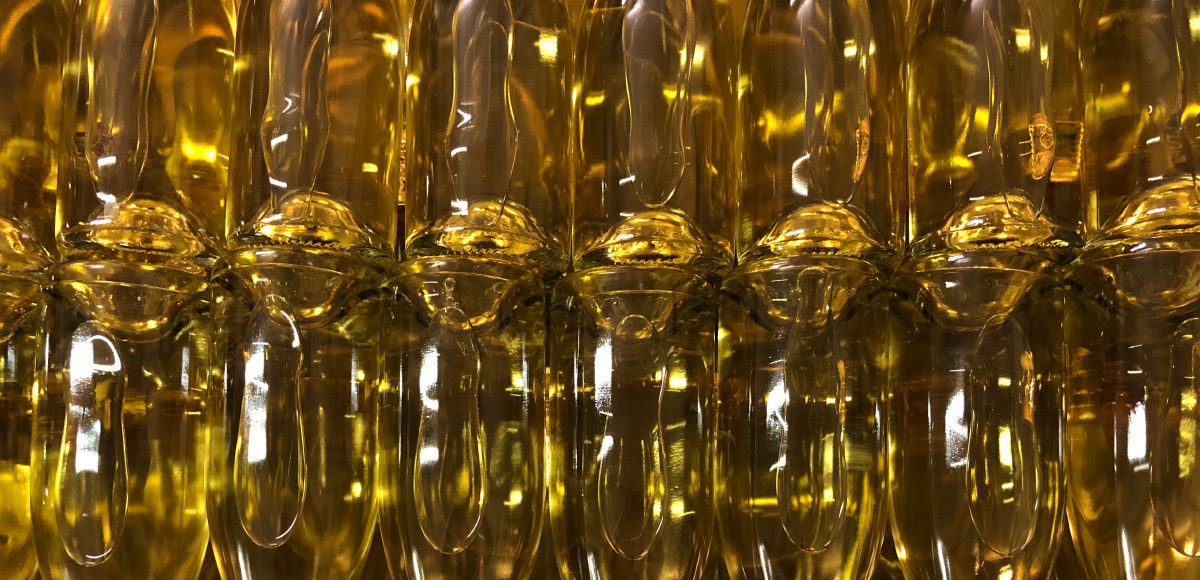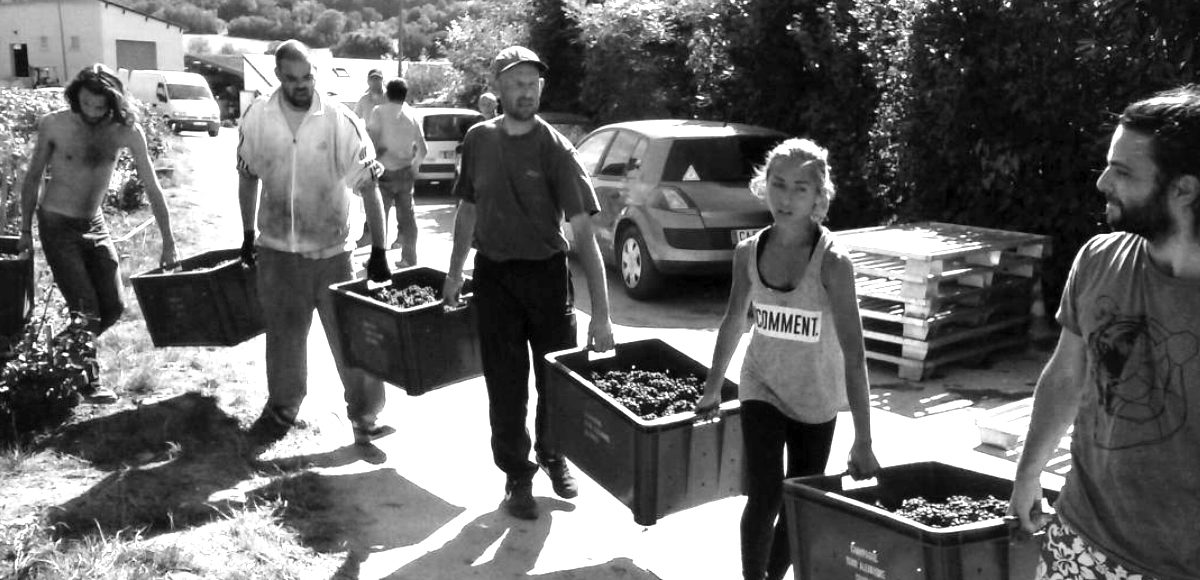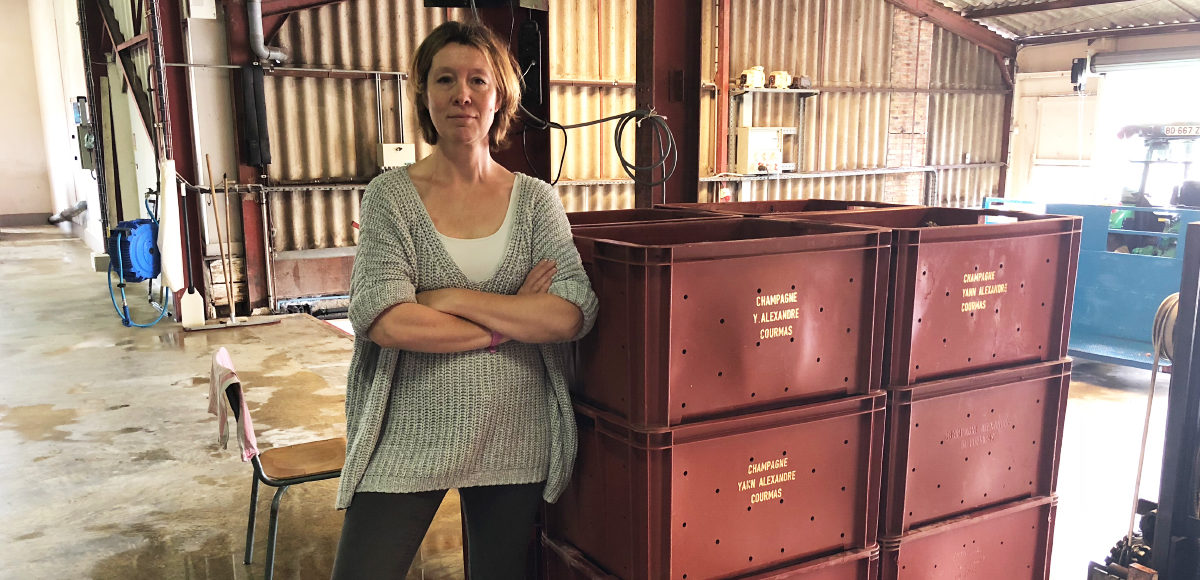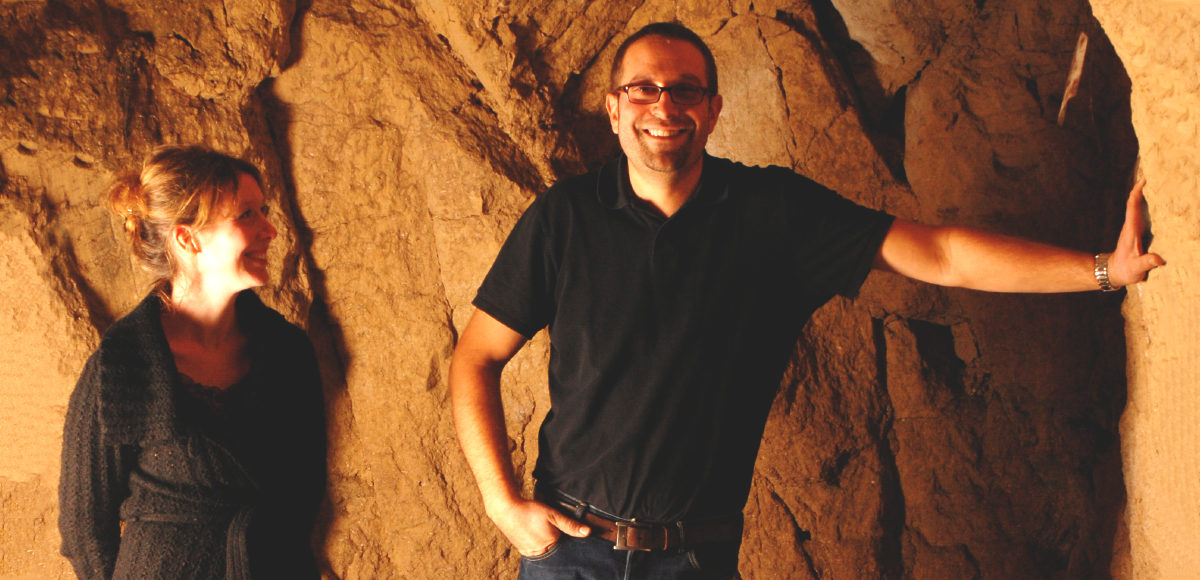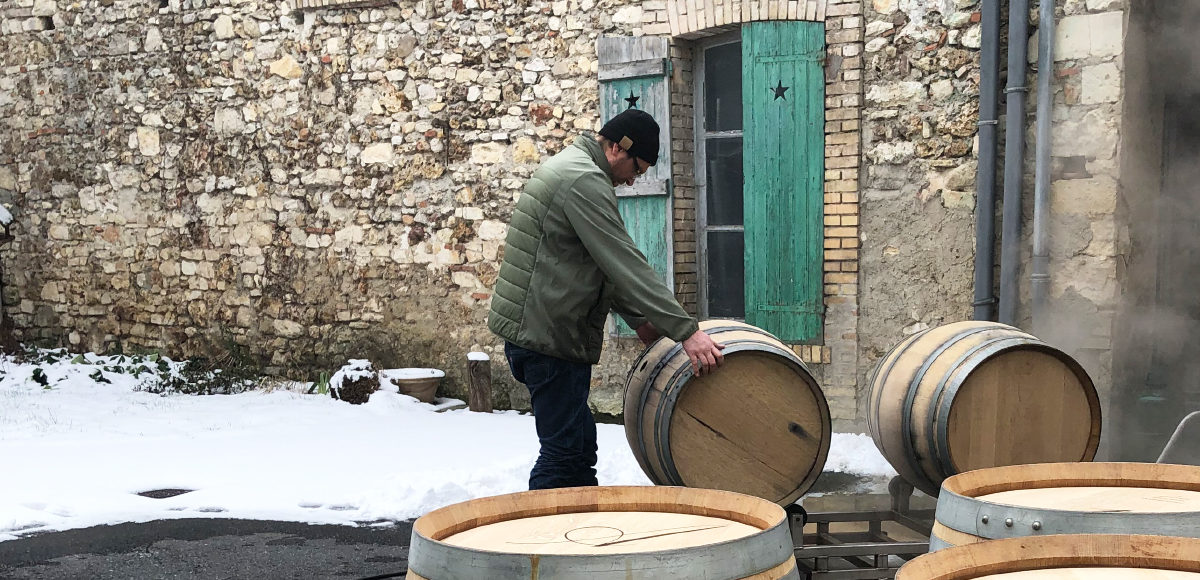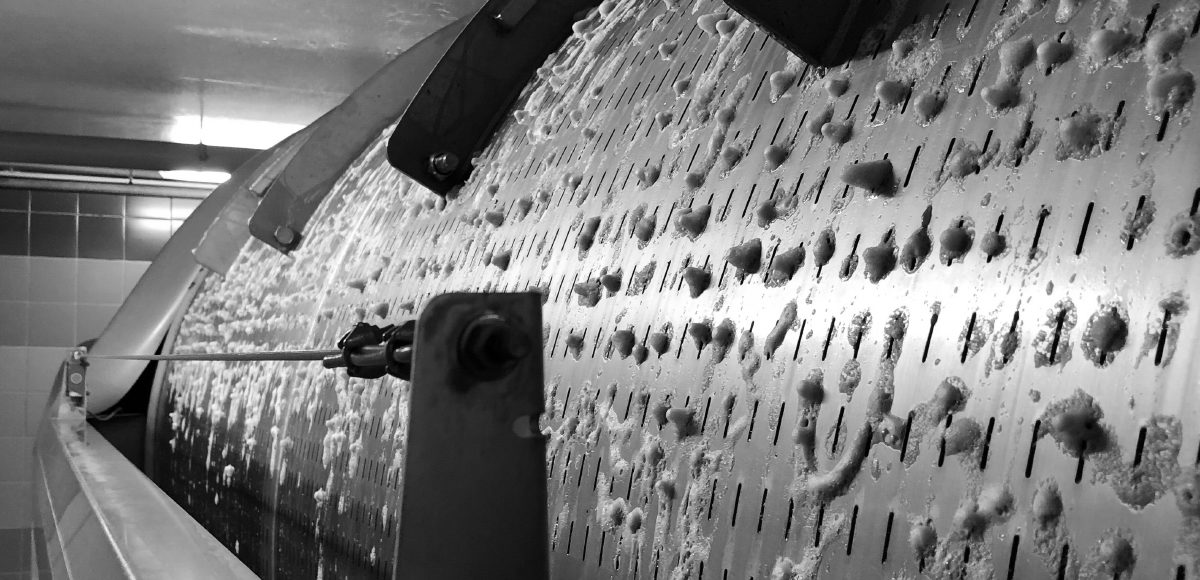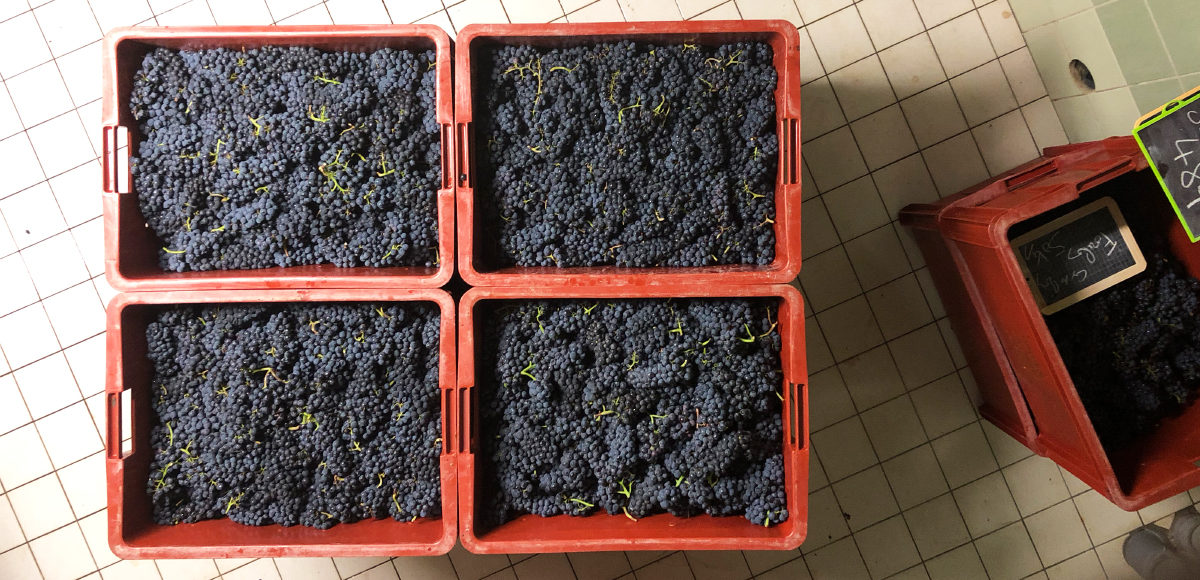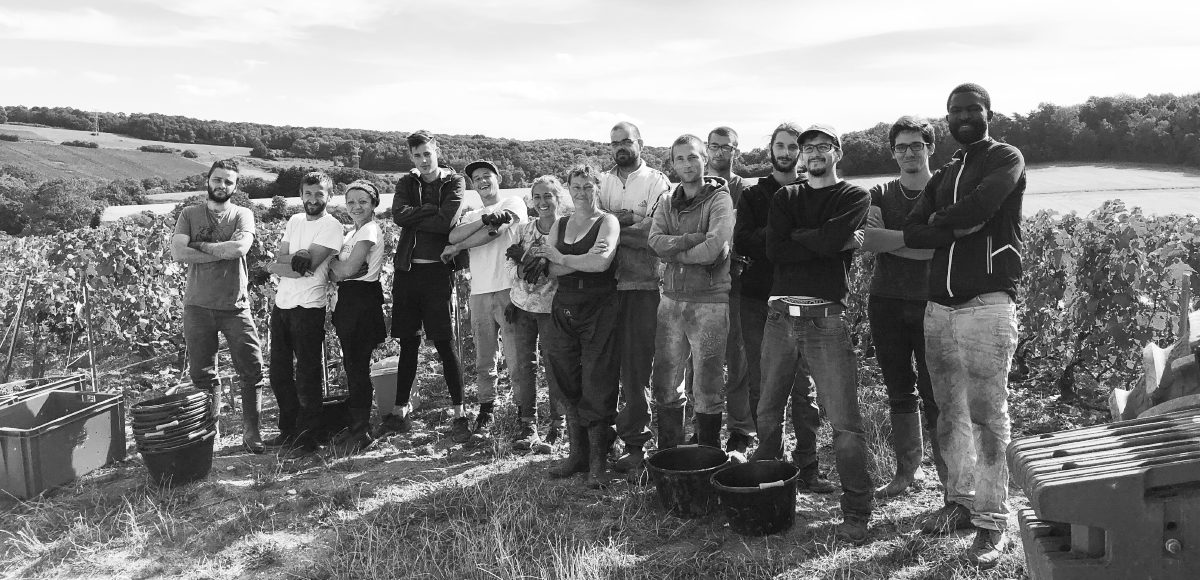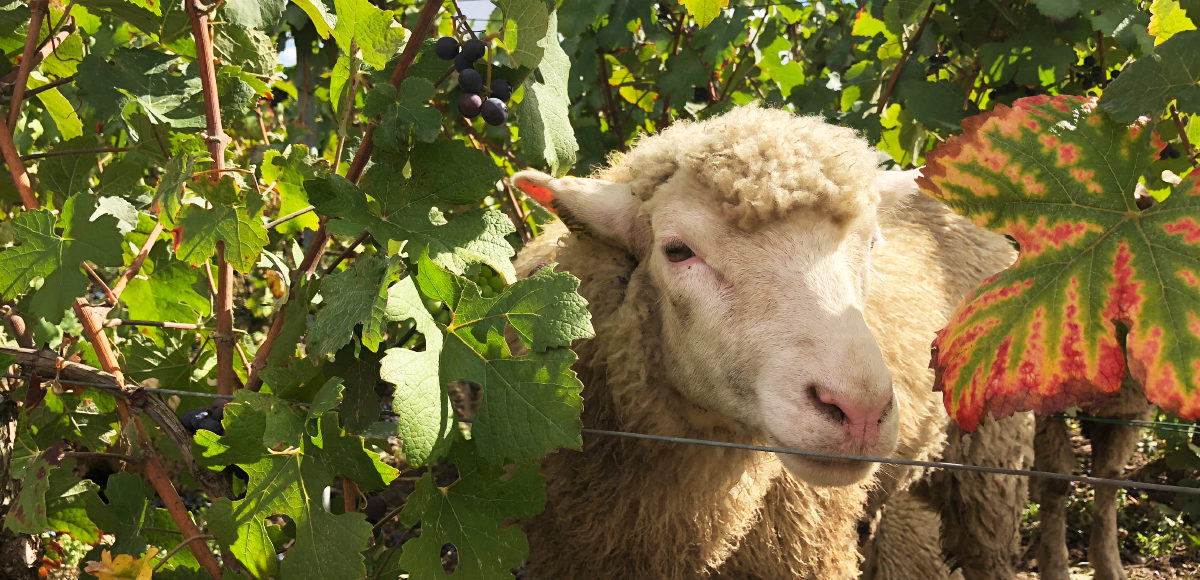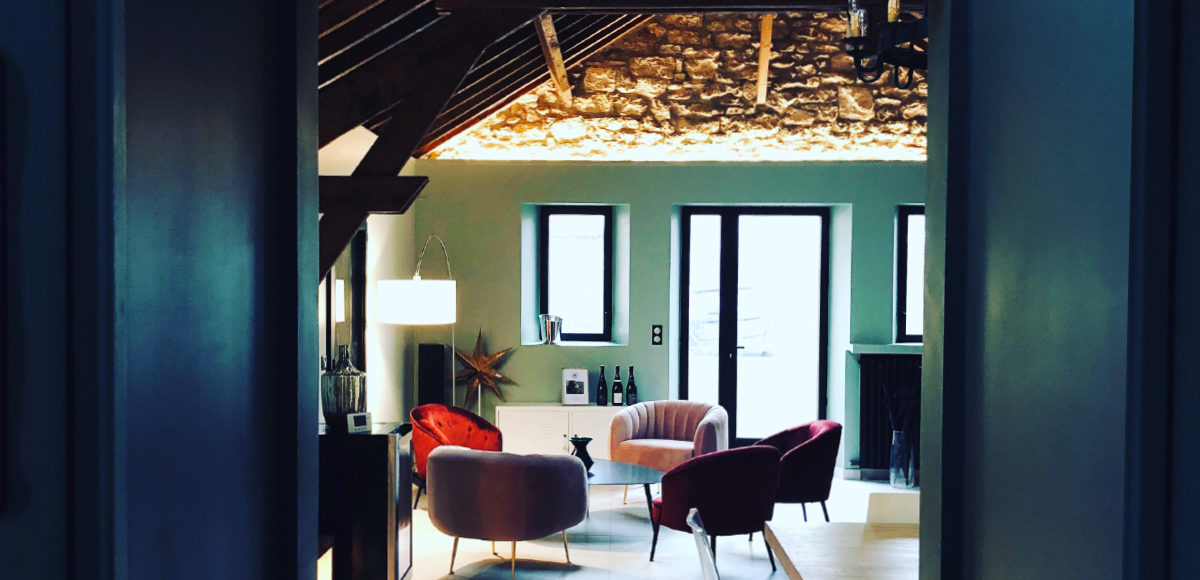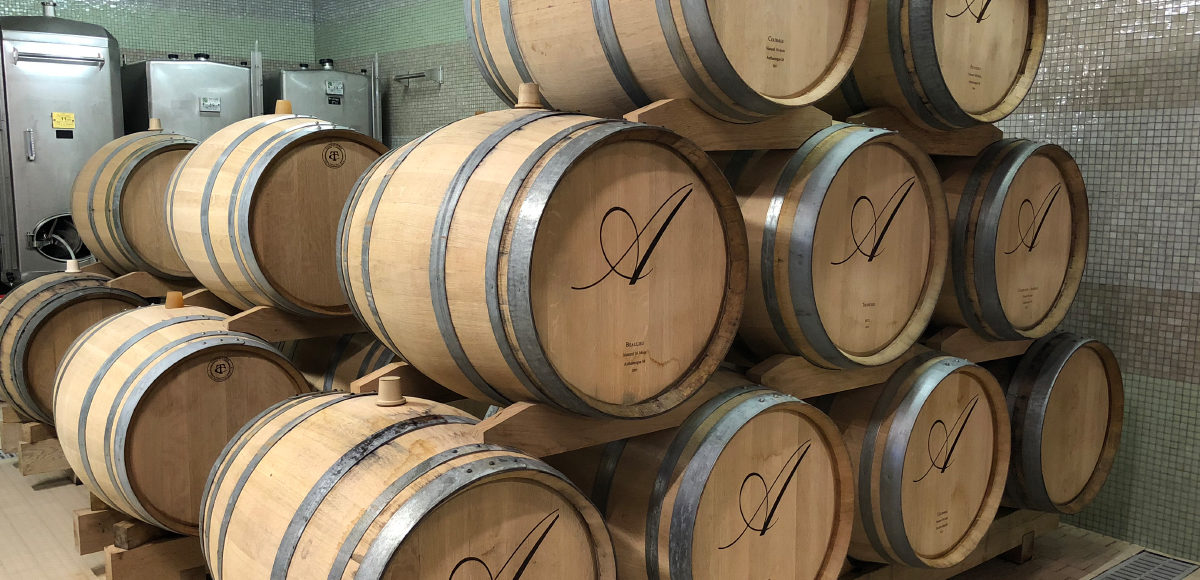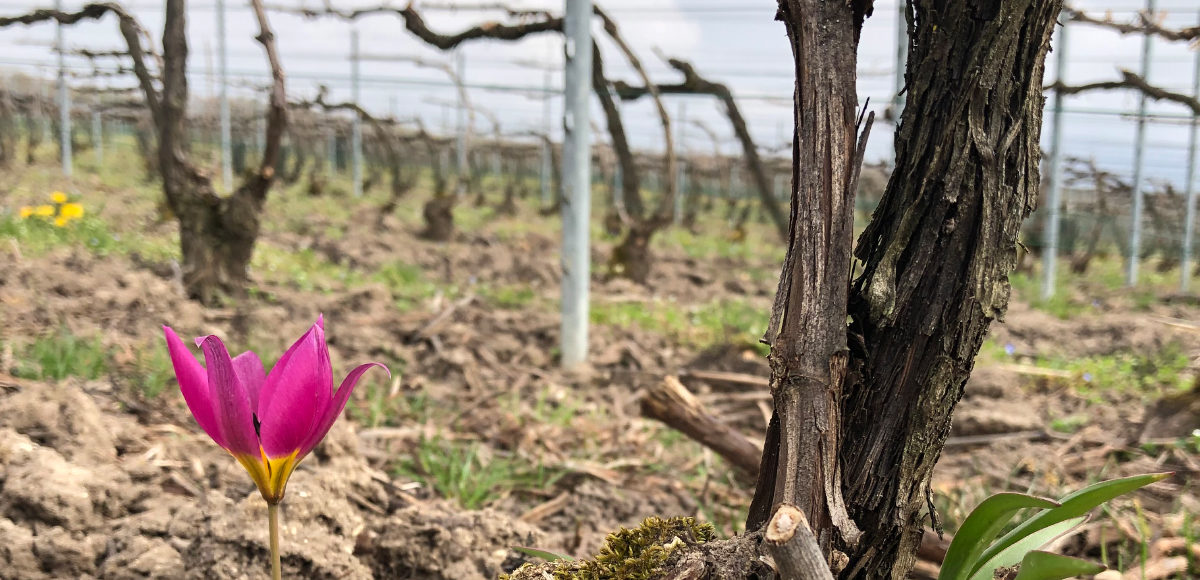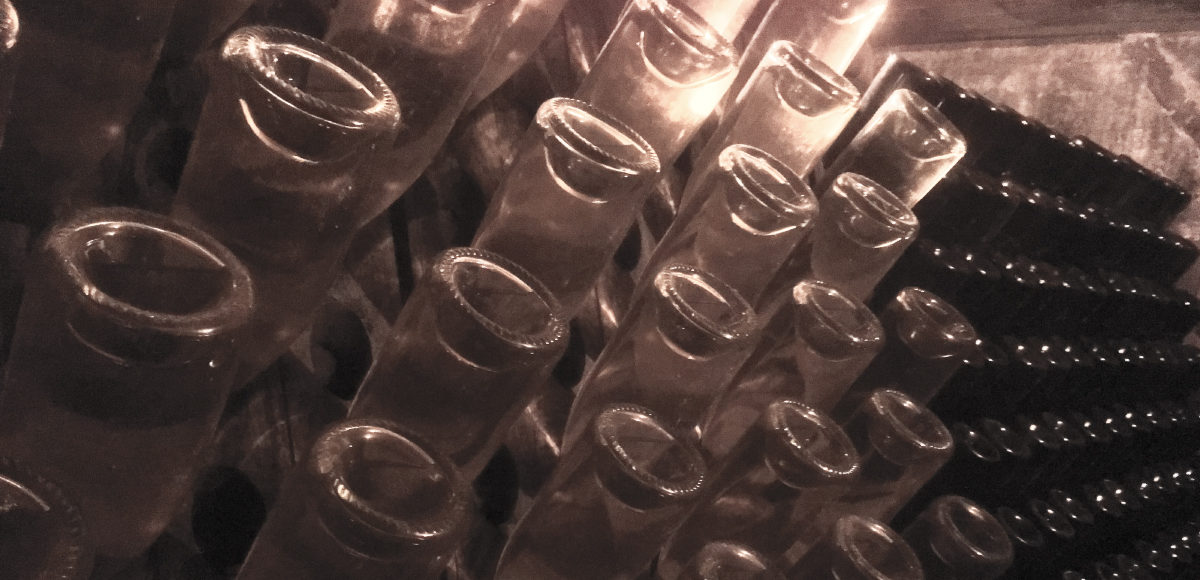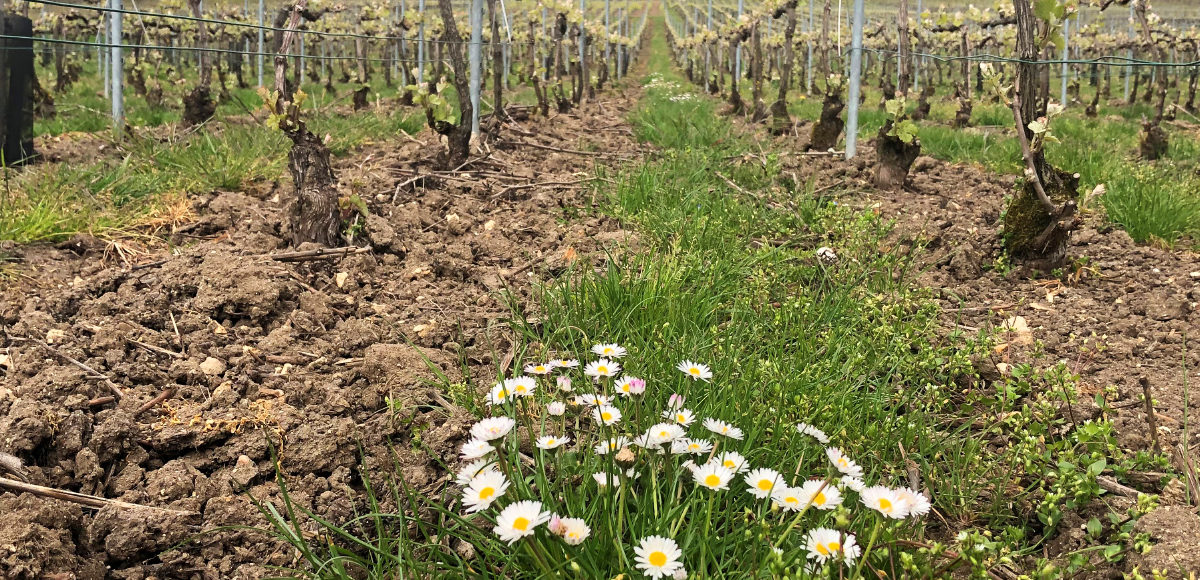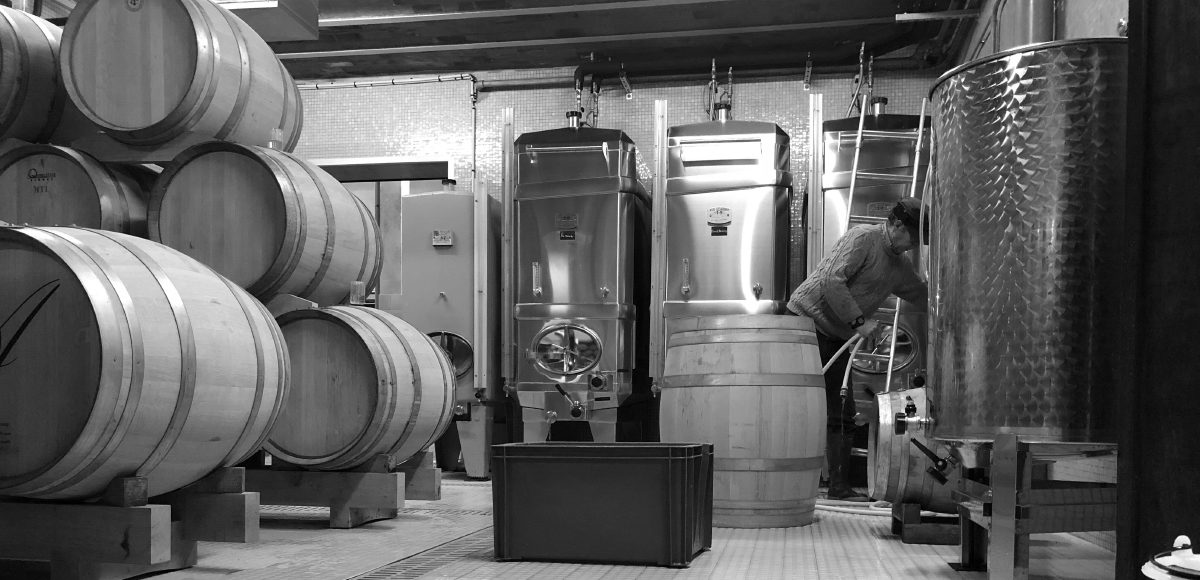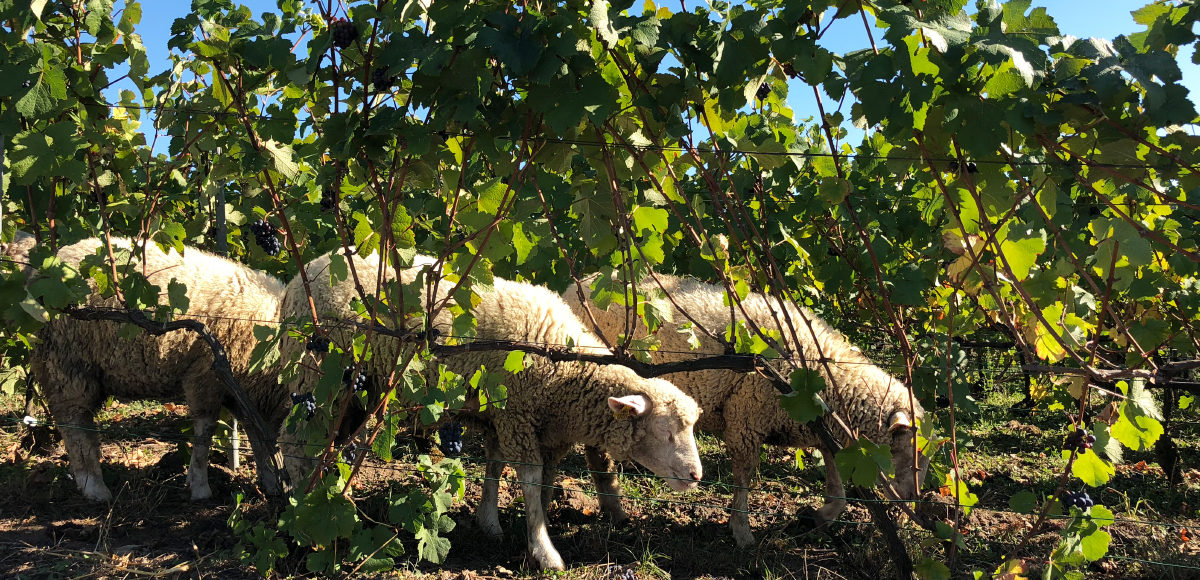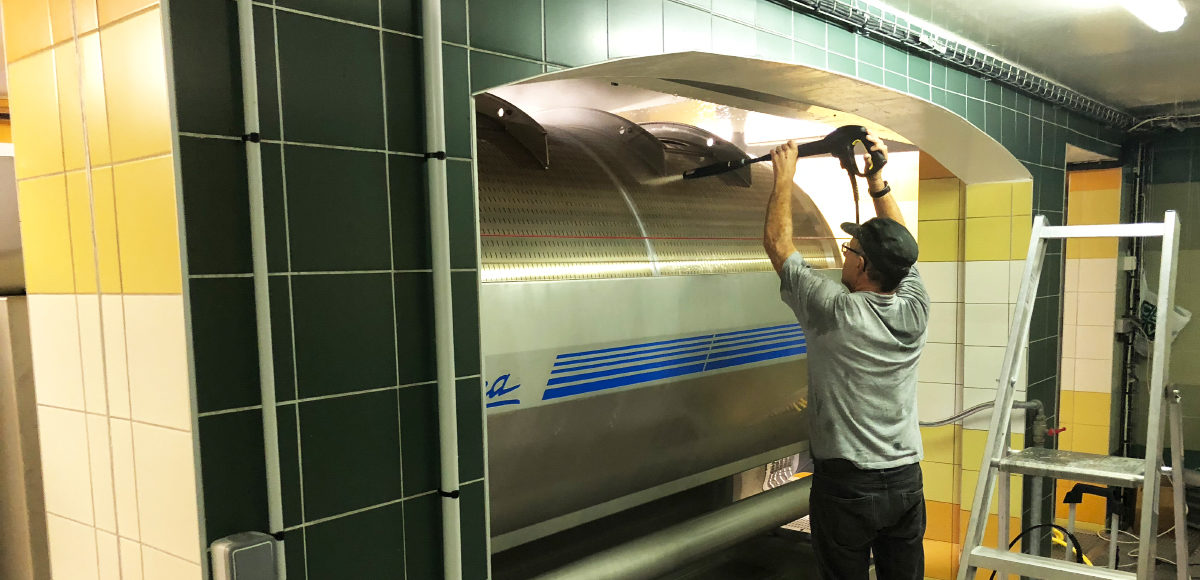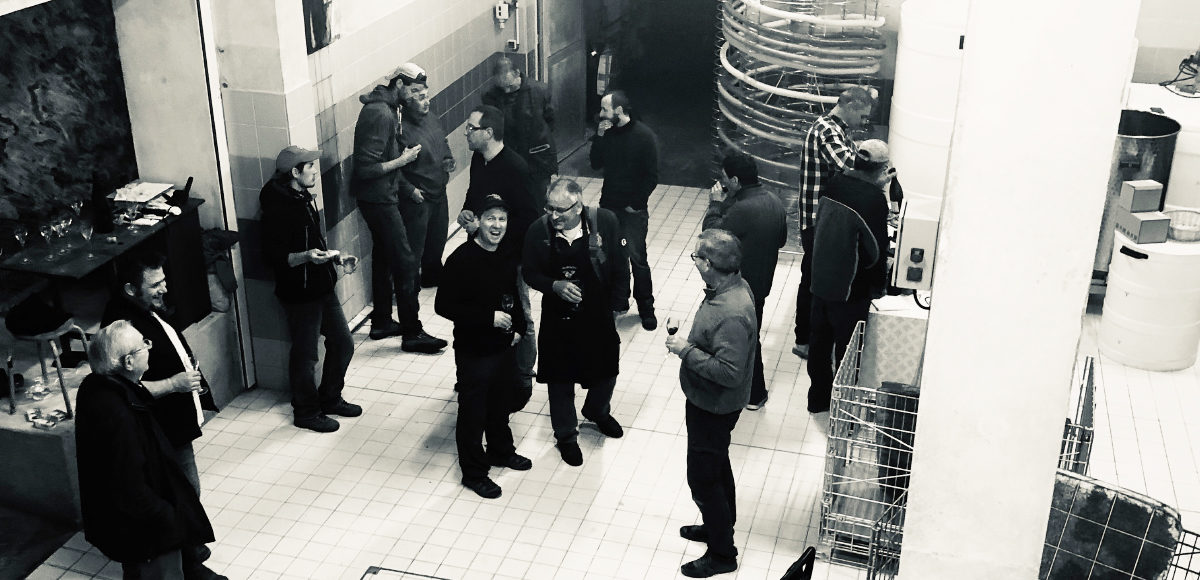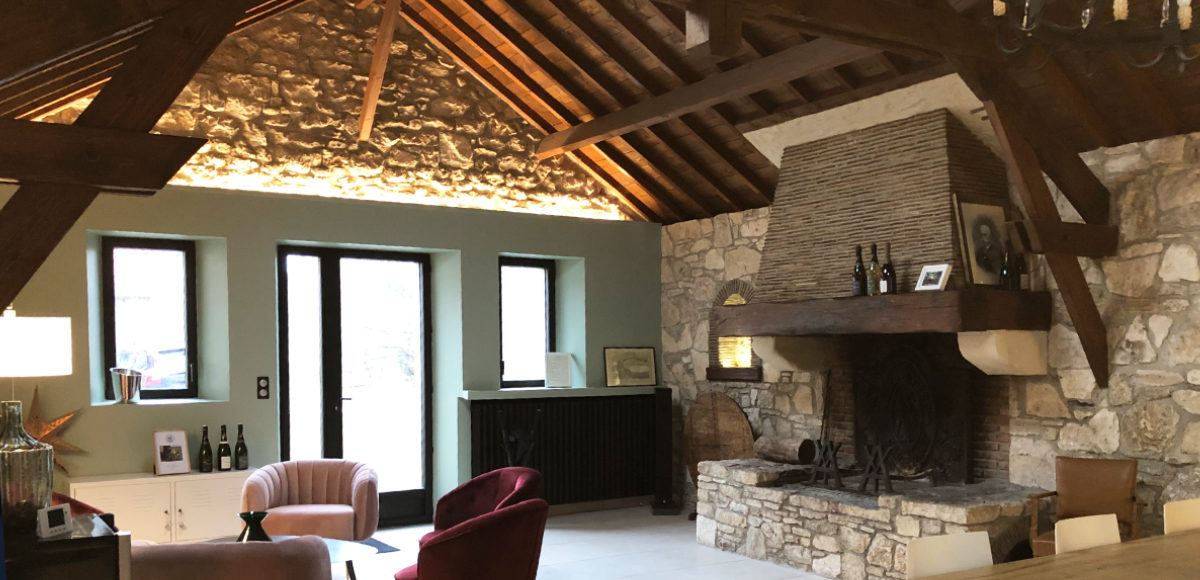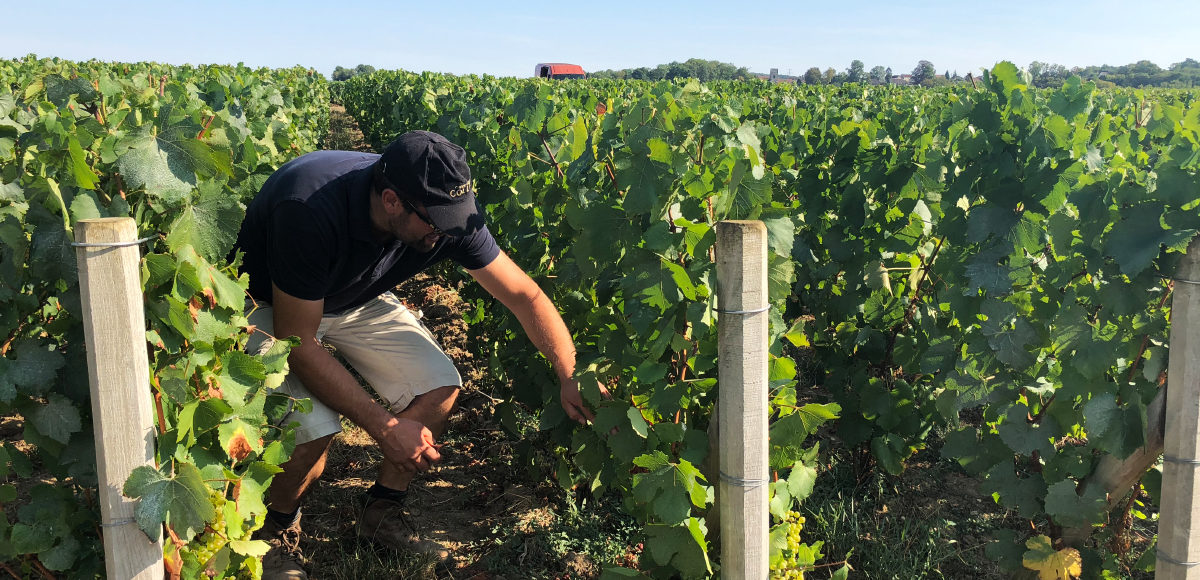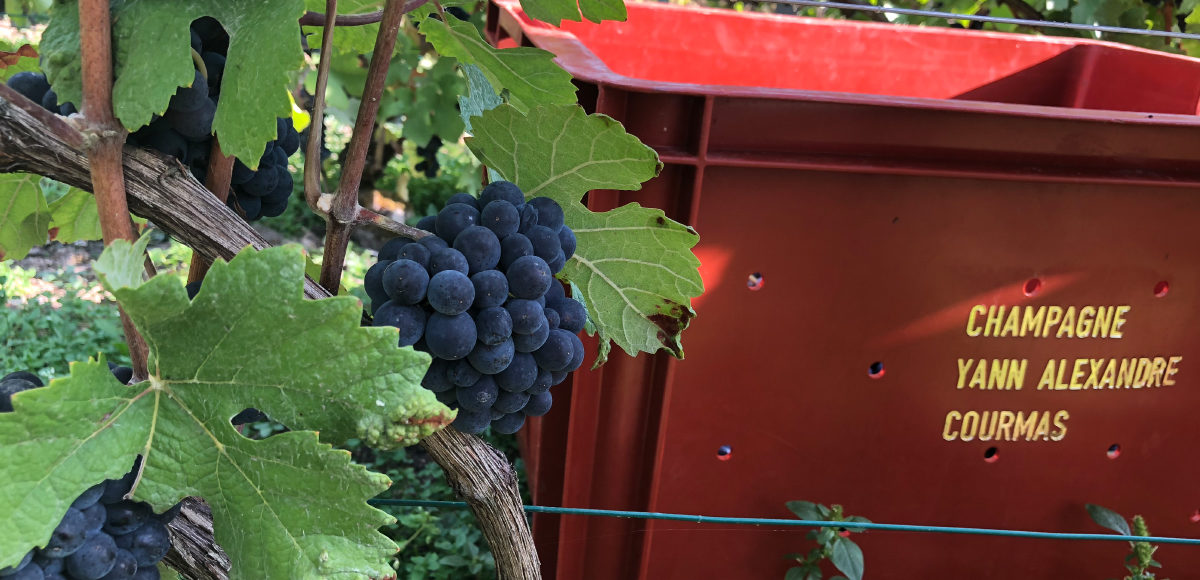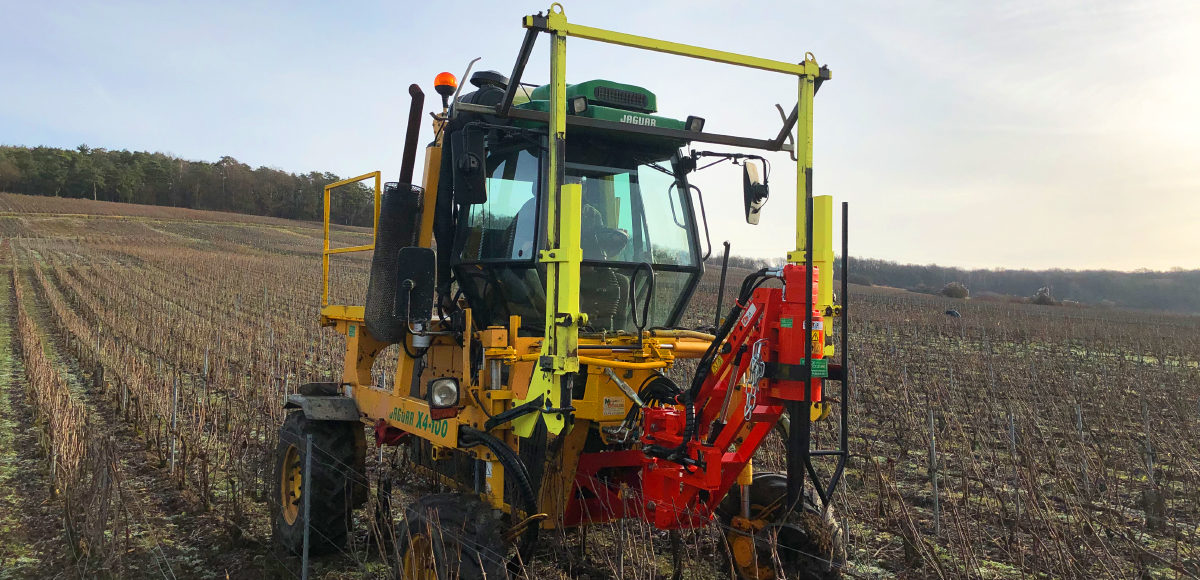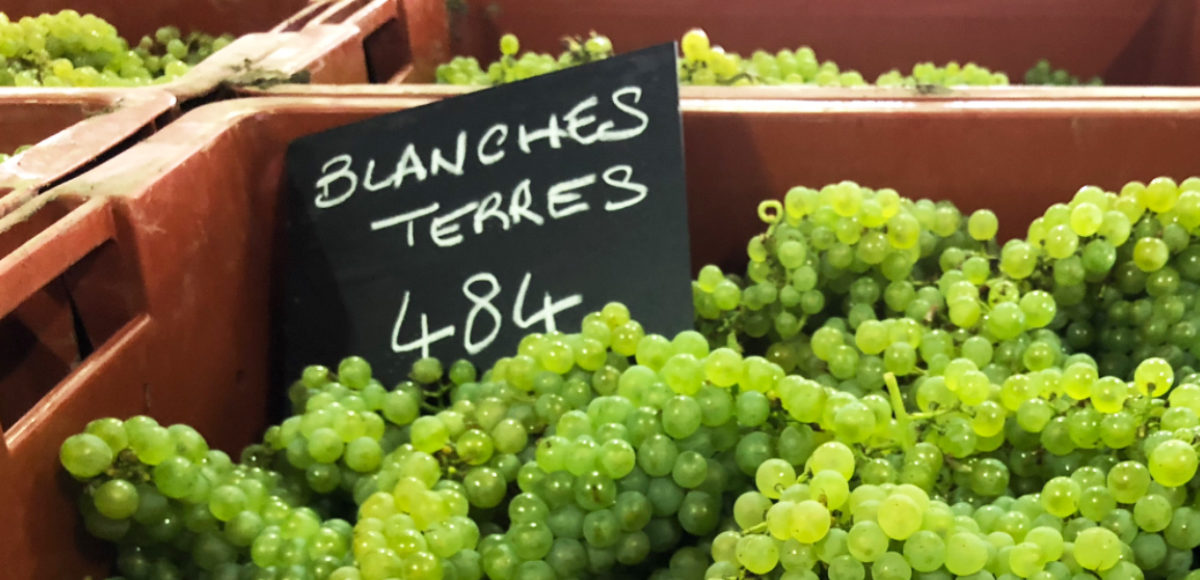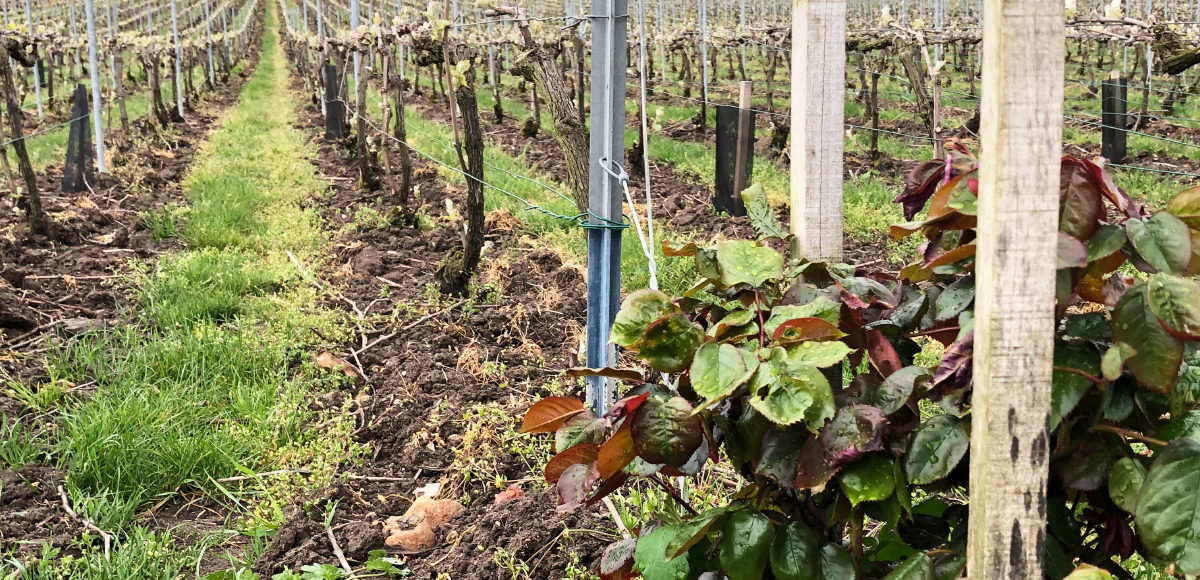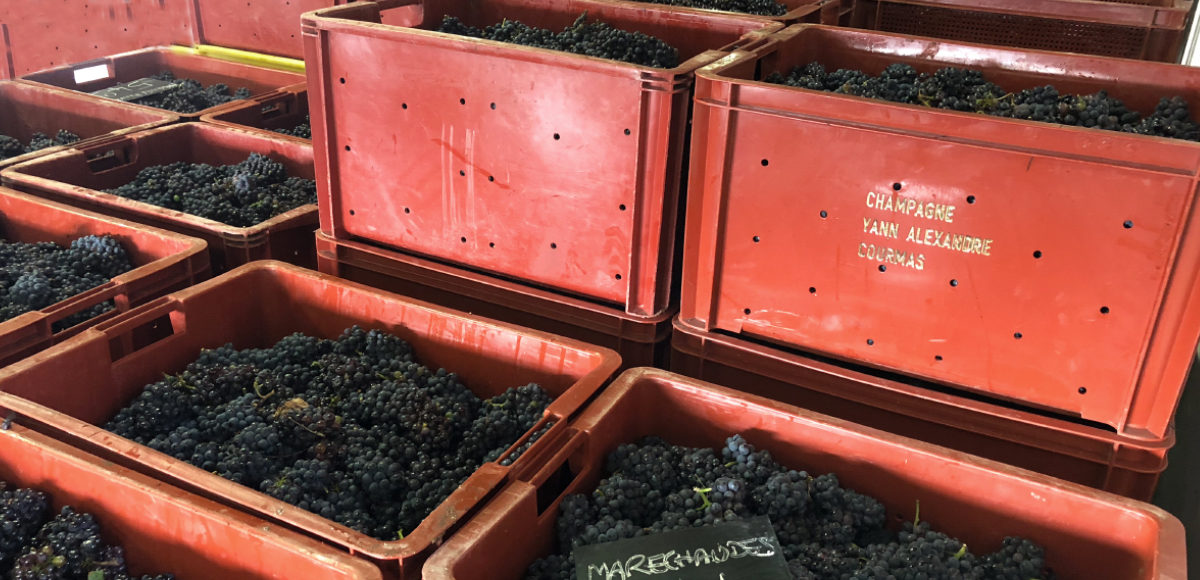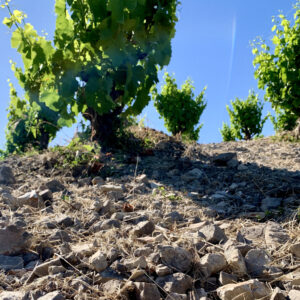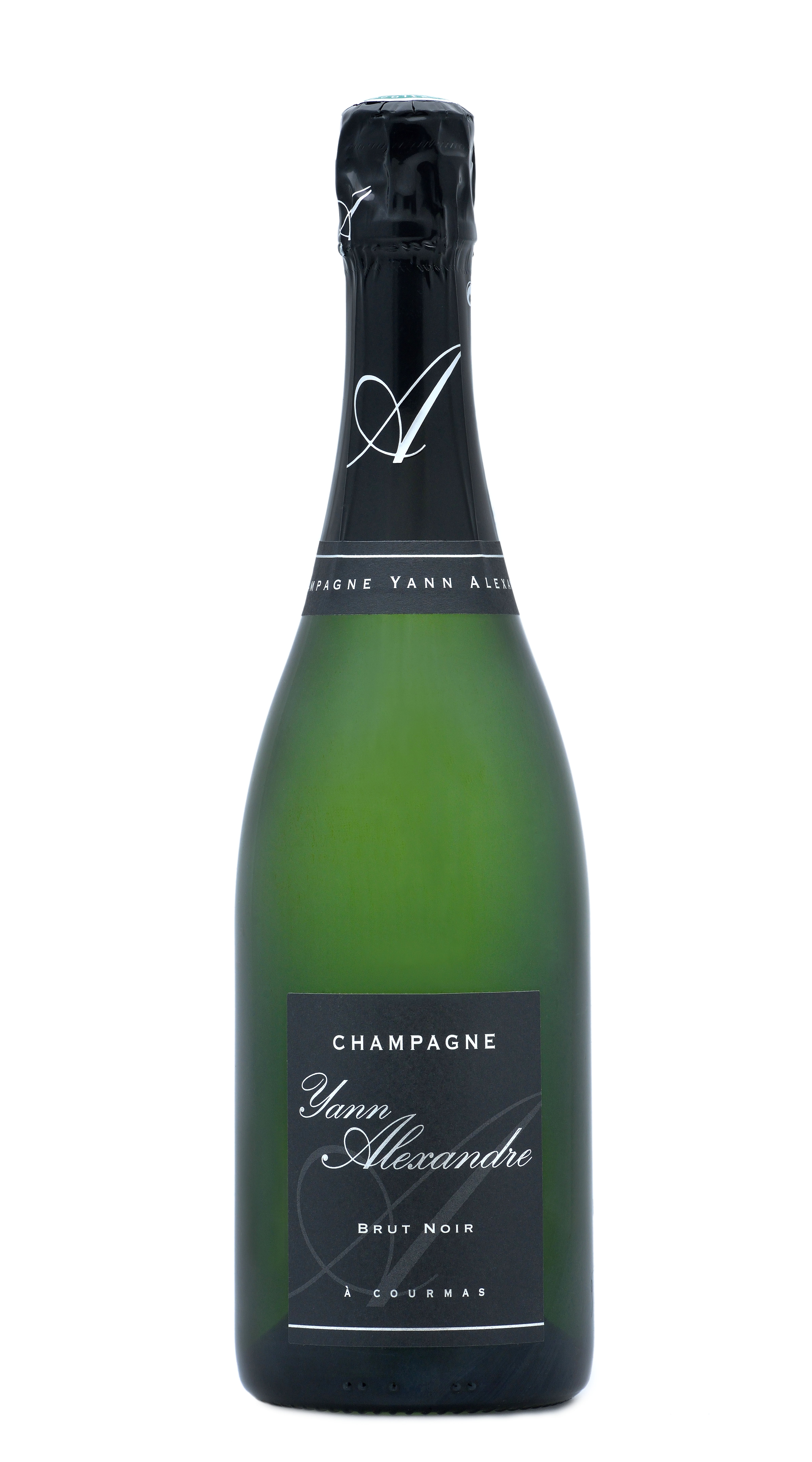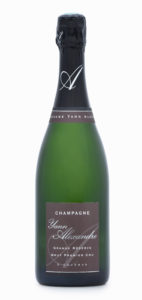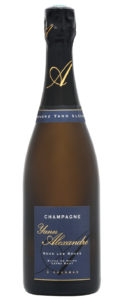“Precision requires human intervention at every stage. Between the earth and the vine, the soil preparation, the choice of varieties as well as their training according to the terroir. All those details, once gathered, make up my sense of balance.” — Yann Alexandre
Yann Alexandre is the eighth generation of his family to grow vines in the Petite Montagne de Reims, the third to make Champagne there. He and his wife, Séverine, share a passion for horticulture that directly informs their viticulture. “We grow the vineyard like a garden,” Yann explains. This is a high bar for two farmers working 6.3 hectares spread over 28 plots in nine villages. But is also essential to their philosophy: “I always try to put forward the characteristics of each plot of land and to reach perfect grape maturity and health.” Vitality is achieved through intensive hand work and regenerative practices to which the Alexandres have been dedicated since 1999. Swaths of bright yellow in the family vineyards signal the restorative impact of this approach: the region’s once ubiquitous tulipe de vigne was eradicated by intensive chemical farming; Yann and Séverine have nurtured the soils back to such health, the delicate flower has returned. As throughout the Petite Montagne, pinot meunier is the star, supported by pinot noir and chardonnay, the grapes matched to soils of calcareous clay, white marls, stones, and flint. Yann declares his aim is “as natural a Champagne as possible,” made from vital grapes, with minimal added sulfites, up to seven years lees aging, hand riddling and disgorgement, and “no detail left to chance.”
Courmas and environs
This 180-inhabitant village, 10 km (6 miles) southwest from Reims, takes its place within the Montagne de Reims, a sweep of low plateau, much of it forested, with vines covering its gentle slopes. Courmas belongs to the Petite Montagne, separated from the Grand Montagne by a main north-south road, the name a reference to the rather lower elevation of the vineyards here. The calcareous clay and stony-flinty soils tend to be shallow and well draining. In Courmas, Yann has 14 parcels, predominantly planted to meunier. These are matched by an equal number scattered to the north in Bouilly, in the 1er Cru villages Villedommange, Coulommes de Montagnes, and Vrigny, and in the sandier soils of Chenay and Merfy in the Massif de Saint Thierry and, to the south, in the stony, calcareous earth of Marfaux and, down in the Vitryat, St.-Lumier-en-Champagne. These sites have been selected for their advantageous “late climate,” as Yann calls it, and their soils, both of which serve to retain acidity and freshness in the wines.
Yann and Séverine Alexandre
Yann can trace his ancestry in the region back to 1690. Désiré Alexandre (Yann’s great-grandfather) vinified still wines and sold them to the big Champagne houses. In 1933, Marcel (Yann’s grandfather) and his brother, Gaston, decided to keep the still wines and in 1966, Yann’s father, Yves, started an eponymous label. Yann follows very much in this tradition, albeit with impressive education to back it up. After studying agronomics, viticulture, and oenology in Beaune, Rouffach, and Avize, and training in Rilly la Montagne, Champagne, in Lutry, Switzerland, and in Saint-Avit-de-Soulège, Bordeaux, he returned to his home village of Courmas. While at the Lycée de Beaune, Yann befriended students from Côte Rôtie, Chablis, Sancerre and he took pleasure in exchanging wines with them. In 1999, he returned to Courmas. Meanwhile, in 1995, he had met Séverine, who was then working in a different field. As Yann says, “I have been sharing my passion for wine with her ever since. We had two particularly successful harvests named Augustin and Tom in 2001 and 2002.” Today the family love cooking, eating, drinking wines, and listening to all types of music. “We love Mozart’s Requiem. We like being at home to take care of our garden. We like skiing with our two boys, now 17 and 18 years old. We like spending time with our friends and our parents. We like our job.” Yann has a long-held interest in growing and a love of plants, particularly roses and bonsais, and a passion for red wines “especially Burgundy” though, his wife points out, “he is open to others, when they are good.”
Vineyards and farming
The Alexandre vineyards span 6.3 hectares of parcels with varying soil compositions all carefully matched to their varieties: 55% meunier, 30% chardonnay, 15% pinot noir. The primarily southwest-facing hillside sites encompass yellow tuffe, white marl, calcareous clay, white stone (“pierreux”) with flint. The vines, which are on average 25 years old, are a mix of clonal and massal selections. Yann’s farming is pioneering. His stated goal is “to make as natural a Champagne as possible” achieved through careful plant health strategy, respect for biodiversity, water resource management, cover crops, and plowing. In this way, he says, “the vine deepens its roots and becomes self-sufficient, erosion is stopped and the inputs are held back and made available for the next crop.” The reappearance of the tulipe de vigne, a delicate flower once present everywhere in the region but wiped out by chemical farming, is an encouraging confirmation of Yann’s approach, echoed by a Level Three High-Value Environmental Certification from the French Ministry of Agriculture earned since 2015. “The thorough maintenance of the soil allows for the self-development of the vine, which takes everything it needs,” Yann notes. Vine training, green pruning and shearing of lateral shoots to thin the vine and ensure the ripening of the grapes are all done by hand. Likewise, sequential, selective harvesting of the various plots to ensure perfect grape ripeness.
In the cellar
Each variety and each plot is vinified separately “to ensure the blending is balanced and fresh,” says Yann. Yann selects the most propitious yeasts, adds minimal sulfites (under 50mg/l), relies on temperature-controlled fermentations in stainless steel and oak (“it depends on the plots — for stainless elevage until bottling, seven months, for oak, three months in barrel and then another three to four in stainless until bottling”). Decisions on malo “depend on the wines” though Yann notes he is “doing less” so as to preserve acidity and freshness. Wines remain on the lees in the Alexandres’ cold cellar: five years for the Brut Noir, seven for the Grand Reserve 1er Cru. The wines are a mix of vintage and nonvintage, with the exceptional Sous-les-Roses Blanc de Noirs representing a “late year but great summer giving beautiful matured grapes” from a single parcel in Courmas and the Blanc de Blanc depicting the “early but very well balanced” 2011 vintage. Hand riddling, disgorgement, and three months’ rest post dosage are the rule. “My wines reflect the history of the region and my sense of balance. They also reflect a particular wish at a particular time. No detail is left to chance. I need to be certain that each wine I make will bring pleasure to the one who tastes it and stimulate the desire to share,” Yann summarizes.
